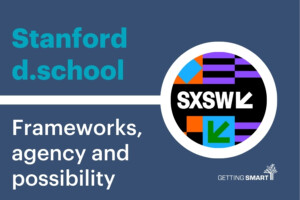Technically Speaking: How Common are the Common Core?
 Doug Levin, Executive Director or the State Education Technology Directors Association (SETDA) posted this important question about variability in supposedly common standards this morning. See the original post and lots of related resources here: http://assess4ed.net/node/289
Doug Levin, Executive Director or the State Education Technology Directors Association (SETDA) posted this important question about variability in supposedly common standards this morning. See the original post and lots of related resources here: http://assess4ed.net/node/289
In my opinion, there are two primary drivers for the new interoperability dialogue in education: (1) the adoption by thevast majority of states of the Common Core State Standards (CCSS) and (2) the continued shift to technology-enabled services and applications designed to support the classroom, the back office, and – increasingly – students directly.
The promise – and indeed I would and have argued, the obligation – of states adopting the CCSS is to pool resources and work together to develop new, more effective, and more cost-effective CCSS-aligned instructional resources and curricula, assessments and professional development resources. This represents a new way of doing business (the New England Common Assessment Program being the most notable exception) and – for my money – is one of the biggest upsides to states agreeing to work in partnership under the CCSS umbrella.
There are a number of federal government- and philanthropy-supported initiatives underway to assist states in building out an interoperable infrastructure that is capable of realizing this vision:
- Race to the Top Assessment, which now extends to five multi-state partnerships (PARCC, SBAC, and 3 smaller consortia targeted to special populations) to jointly develop and deploy new CCSS-aligned assessments;
- The deployment of instructional support systems as a condition of Race to the Top, coupled with the consistent federal focus on building state data system capacity and functionality;
- The Learning Registry, which is a web service to facilitate the sharing of information about digital assets for education;
- The Learning Resource Metadata Initiative (LRMI), which is developing a vocabulary for the major search engines to facilitate search and discovery of online CCSS-aligned educational resources; and,
- The Shared Learning Collaborative, which is building CCSS-aligned infrastructure in partnership with states and fostering a public-private ecosystem to enable personalized learning.
All of these interoperability efforts are predicated on a faithful deployment of the CCSS in the states.
The issue of fidelity of implementation was something that was on the minds of and addressed by NGA and CCSSO at the time the effort was rolled out. Two mechanisms were put in place to ensure fidelity: (1) the selection of an intellectual property license for the CCSS that expressly prohibits modification of the CCSS themselves, and (2) offering adopting states the express permission to add up to 15% additional standards to the CCSS to reflect state needs and context.
In dialogue with one of the major standards alignment vendors, I recently learned that as many as 17 states have availed themselves of the so-called 15% rule – adding state-specific standards to the CCSS. Yet, I can find no independent source to verify this figure or to shed light on the nature of their changes.
Why might this matter?
The state of California, presumably acting under the 15% rule, has not only added state-specific standards to the CCSS, but has apparently substantively modified the CCSS themselves in ways that change the meaning of the standards and that complicate technical efforts to ensure uniform sequencing of standards across states.
Readers can judge for themselves how significant an issue this might be, as they have helpfully bolded and underlined each of their state-specific changes to the CCSS throughout the CA Common Core Standards document (note: 21MB PDF). (Alternatively, visit: http://www.ocde.us/CommonCoreCA/Pages/CA-Common-Core-Standards.aspx for context.)
Consider just one small example among dozens that were made: CCSS ELA SL.5.3., which reads: “Summarize the points a speaker makes and explain how each claim is supported by reasons and evidence.”
In contrast, California’s version reads (P. 35 of the CA CCSS document): “Summarize the points a speaker [or media source] makes and explain how each claim is supported by reasons and evidence, [and identify and analyze any logical fallacies.]”
I think an argument can be made that while these are similar standards, they are not the same and that (best case) it would introduce noise into any attempt at technical alignment. I also do not currently know how many other states of the 17 (if that is the correct number itself) may have made similar changes of the official CCSS.
For me, this raises a few questions:
- How common are the CCSS really, and who is systematically tracking state-specific CCSS modifications and additions?
- How much variation in state-specific CCSS standards language can be tolerated at a technical level to ensure interoperability across states?
- What is the process for ongoing governance of CCSS implementation at the technical level?
What say you: tempest in a teacup or a need for better coordination of the technical implementation of the CCSS?







0 Comments
Leave a Comment
Your email address will not be published. All fields are required.